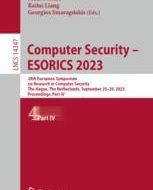
Background:
PANoptosis represents a newly identified form of programmed cell death that plays a significant role in the autoimmune diseases. Rheumatoid arthritis (RA) is characterized by the presence of autoantibodies. Nevertheless, the specific biomarkers and molecular mechanisms responsible for the apoptotic characteristics of RA remain largely uninvestigated.
Methods:
We utilized 8 synovial tissue RA datasets. We selected genes associated with PANoptosis from the GeneCard database. By employing the limma, WGCNA, and machine learning algorithms we identified core genes. We utilized consensus clustering analysis to identify distinct PANoptosis subtypes of RA. Boruta algorithm was employed to construct a PANoptosis signature score. The sensitivity of distinct subtypes to drug treatment was verified using an independent dataset.
Results:
The SPP1 emerged as the significant gene, with its elevated expression in RA patients. We identified two PANoptosis RA subtypes. Cluster 1 showed high expression of Tregs, resting dendritic cells, and resting mast cells. Cluster 2 exhibited high expression of CD4 memory T cells and follicular helper T cells. Cluster 2 exhibited a higher degree of sensitivity towards immune checkpoint therapy. Employing the Boruta algorithm, a subtype score was devised for 37 PANoptosis genes, successfully discerning the subtypes (AUC = 0.794), wherein patients with elevated scores demonstrated enhanced responsiveness to Rituximab treatment.
Conclusion:
Our analysis revealed that SPP1 holds potential biomarker for the diagnosis of RA. Cluster 2 exhibited enhanced sensitivity to immune checkpoint therapy, higher PANoptosis scores, and improved responsiveness to drug treatment. This study offers potential implications in the realm of diagnosis and treatment.
Keywords:
Machine learning; Molecular subtype; PANoptosis; Rheumatoid arthritis; Treatment.





